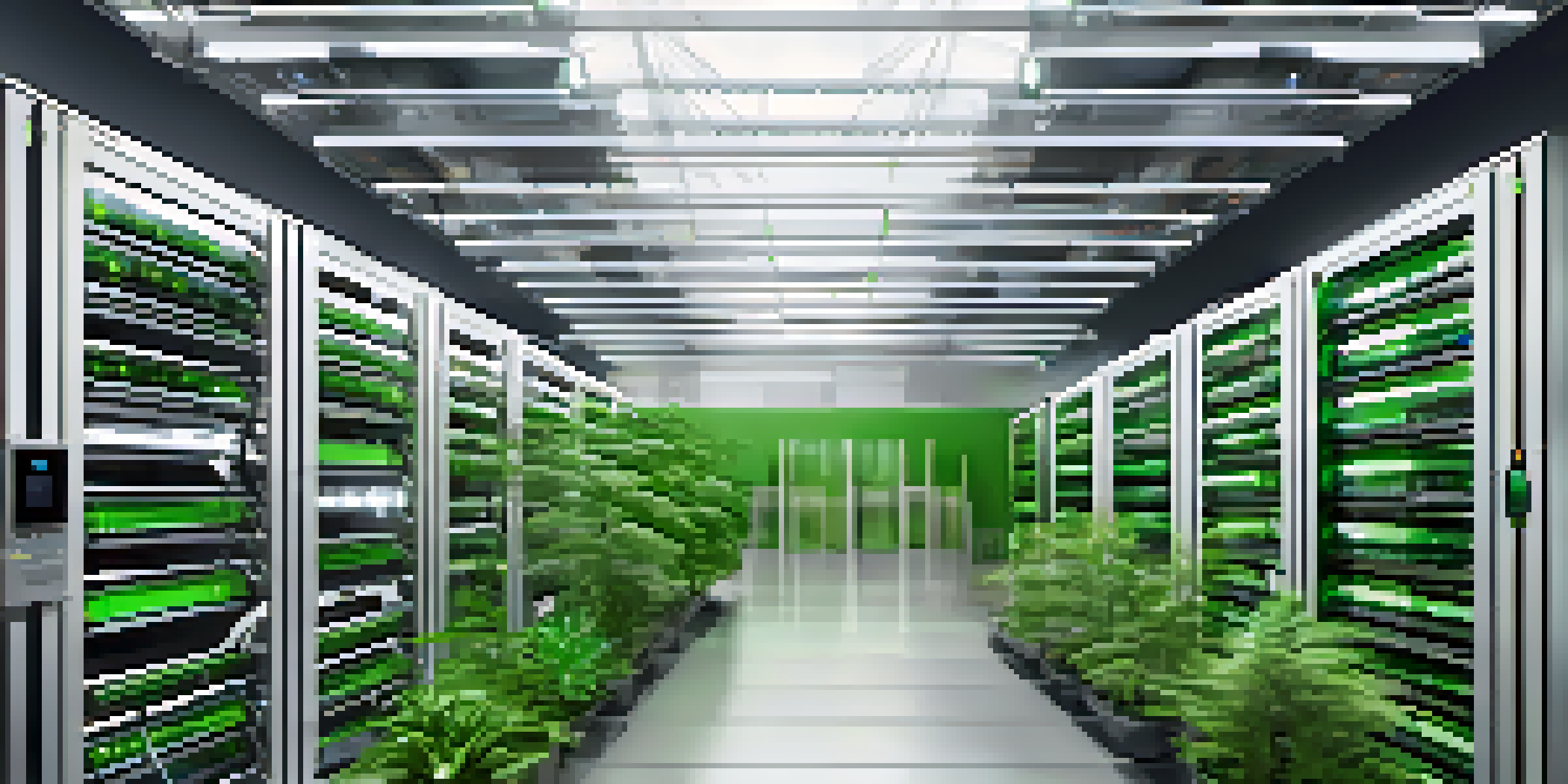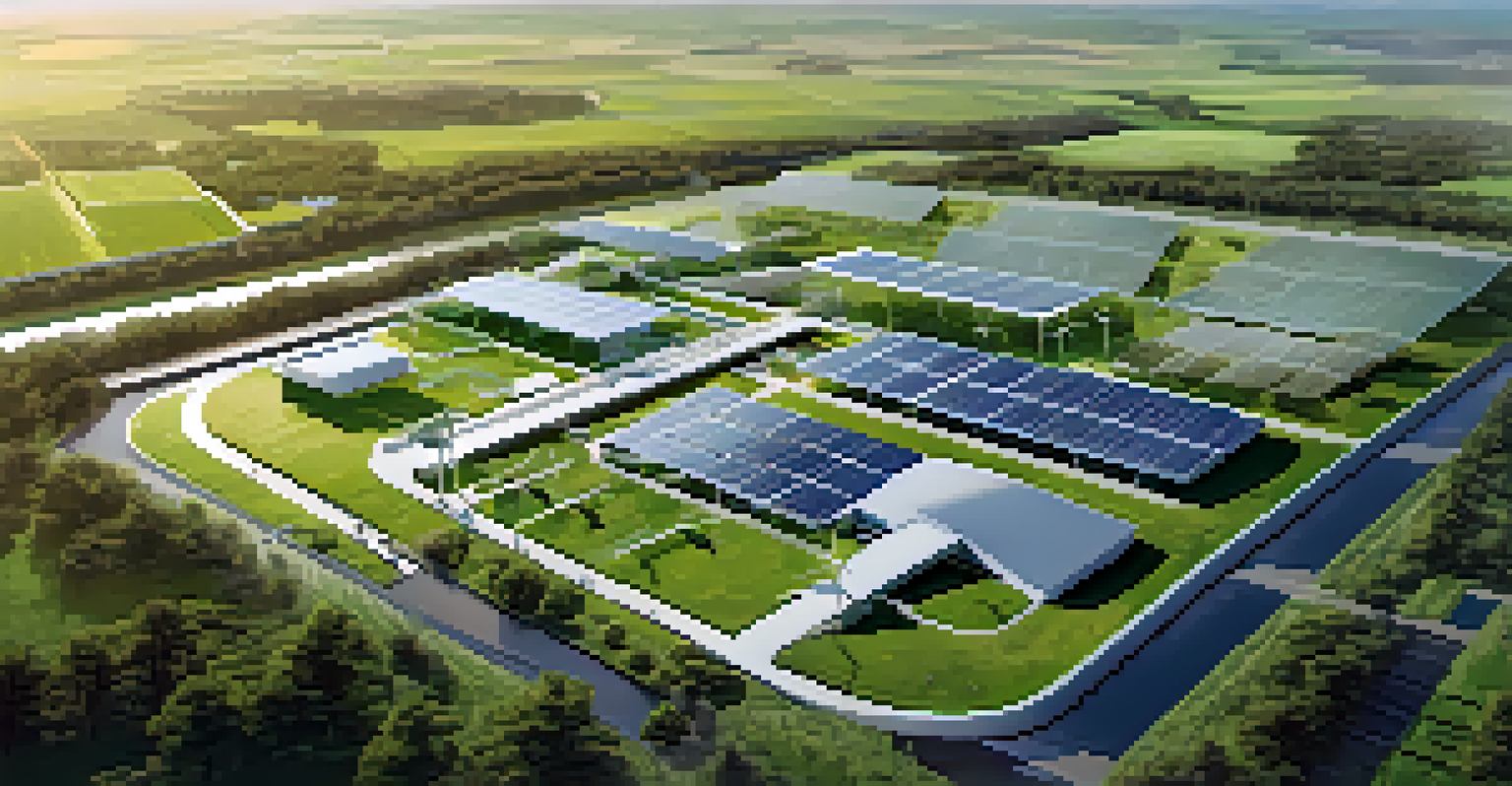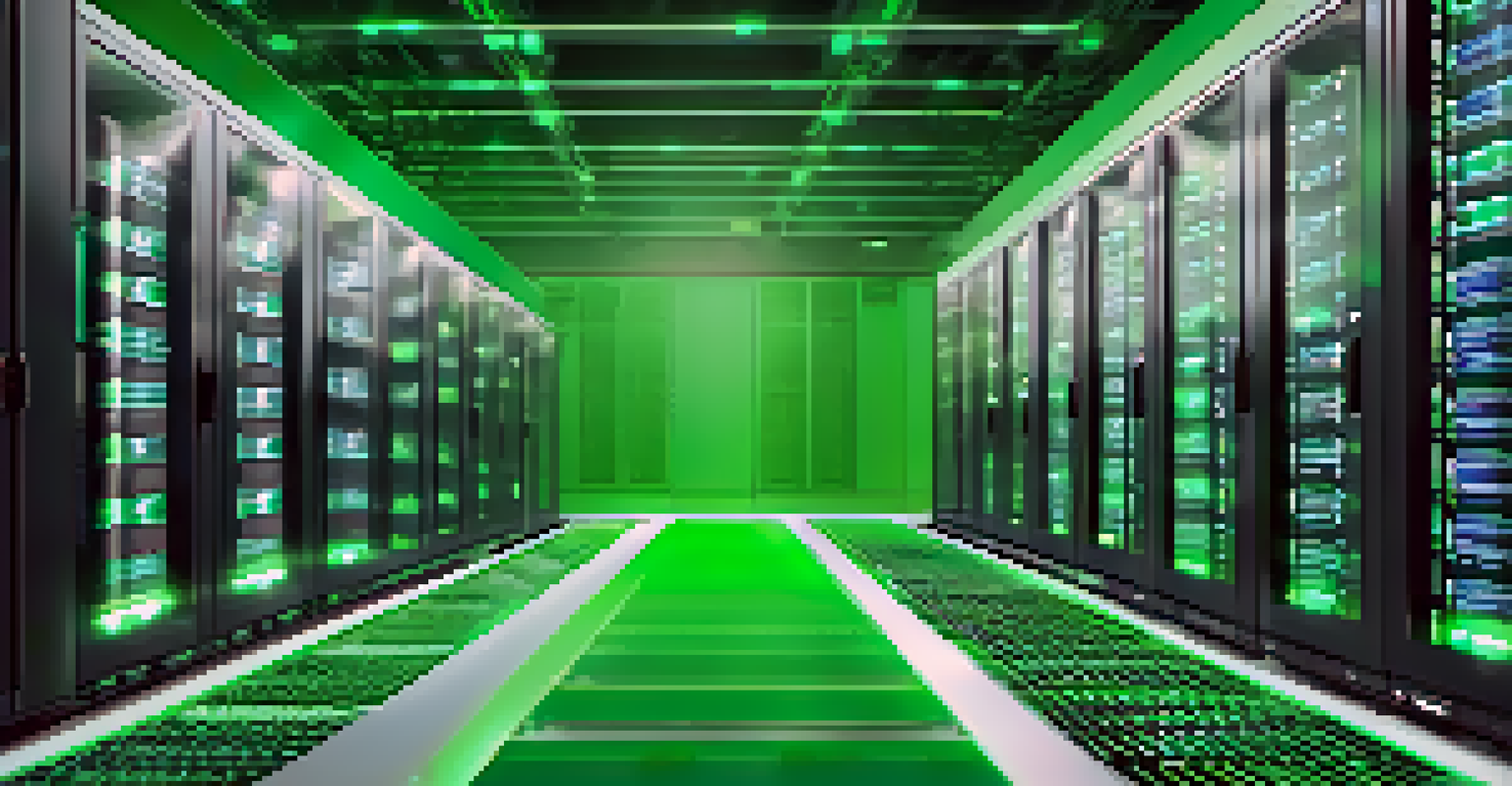Green Data Centers: A Foundation for Sustainable Software

Understanding Green Data Centers and Their Importance
Green data centers are facilities designed with eco-friendly practices that prioritize energy efficiency and sustainability. They play a crucial role in reducing the carbon footprint associated with traditional data centers, which often consume vast amounts of energy. By utilizing renewable energy sources and advanced cooling technologies, these centers help mitigate environmental impact while improving operational efficiency.
The greatest threat to our planet is the belief that someone else will save it.
The importance of green data centers extends beyond just environmental benefits; they also lead to cost savings and improved performance. Companies that invest in sustainable infrastructure often find that they can reduce operational costs through lower energy bills and increased efficiency. This not only benefits the planet but also enhances their bottom line, making sustainability a win-win scenario.
Furthermore, as consumers become more environmentally conscious, businesses that showcase their commitment to sustainability can gain a competitive edge. Green data centers not only support the development of sustainable software but also reflect a brand's values, creating a positive image that resonates with eco-aware customers.
Key Features of Green Data Centers
A variety of key features set green data centers apart from traditional ones. These may include energy-efficient hardware, optimized cooling systems, and renewable energy sources like solar or wind power. For instance, by implementing advanced cooling techniques, such as hot aisle/cold aisle containment, data centers can significantly reduce the energy needed to regulate temperatures.

Another essential feature is virtualization technology, which maximizes resource utilization. By running multiple virtual servers on a single physical machine, organizations can minimize hardware requirements and energy consumption. This not only leads to energy savings but also enhances flexibility and scalability in resource management.
Green Data Centers Reduce Impact
These eco-friendly facilities prioritize energy efficiency and sustainability, significantly lowering carbon footprints compared to traditional data centers.
Green certifications, such as LEED (Leadership in Energy and Environmental Design), are also commonly pursued by eco-conscious data centers. These certifications provide a framework for measuring sustainability achievements, giving businesses a structured way to demonstrate their commitment to green practices while inspiring others in the industry to follow suit.
The Role of Renewable Energy in Green Data Centers
Renewable energy is a cornerstone of green data centers, significantly reducing reliance on fossil fuels. By harnessing energy from sources like wind, solar, and hydropower, these centers not only cut emissions but also contribute to a more sustainable energy grid. For example, a data center powered entirely by solar panels can operate with minimal environmental impact.
Sustainability is not a destination, it's a journey. It's about balancing the needs of the present with the needs of the future.
Implementing renewable energy is not just beneficial for the environment; it can also be financially advantageous. Many governments and organizations offer incentives for using renewable energy, further lowering operational costs. This financial support can make the transition to green energy more accessible for businesses looking to invest in sustainable practices.
In addition to direct energy savings, renewable energy sources can enhance a data center’s reputation. Companies that prioritize green energy initiatives often attract clients who value sustainability, leading to potential new business opportunities. This alignment of values can foster long-term relationships with eco-conscious customers.
Energy Efficiency Measures in Data Centers
Energy efficiency measures are critical for reducing the overall consumption in data centers. Techniques such as energy-efficient power supplies and advanced cooling methods can lower energy use while maintaining performance. For instance, using Liquid Cooling Technology can be much more efficient than traditional air conditioning systems, allowing servers to operate at optimal temperatures with less energy.
Another effective measure is the deployment of energy monitoring tools. By tracking energy consumption patterns, data centers can identify areas for improvement and implement targeted strategies to enhance efficiency. This real-time data helps facilities make informed decisions that lead to sustainable outcomes.
Cost Savings from Sustainability
Investing in green data centers not only benefits the environment but also leads to reduced operational costs and improved performance for companies.
Upgrading to energy-efficient hardware is also a vital component of any green data center strategy. Modern servers and storage solutions are designed to consume less power without sacrificing performance, which can lead to significant energy savings over time. This not only benefits the environment but also aligns with cost-saving goals.
The Impact of Software on Data Center Sustainability
Software plays a pivotal role in enhancing the sustainability of green data centers. Efficient software design can minimize resource consumption and optimize performance, leading to lower energy requirements. For instance, cloud computing platforms allow businesses to scale resources as needed, reducing the need for excessive physical infrastructure.
Moreover, software that supports automation can significantly improve operational efficiency. By automating tasks such as resource allocation and workload management, data centers can reduce energy waste and improve overall performance. This not only helps in achieving sustainability goals but also frees up human resources for other critical tasks.
Sustainable software development practices, such as using low-code platforms or energy-efficient algorithms, can further contribute to the greening of data centers. As developers become more aware of their environmental impact, they can create solutions that prioritize sustainability, leading to a more eco-friendly tech landscape.
Challenges in Transitioning to Green Data Centers
Transitioning to green data centers is not without its challenges. One of the primary hurdles is the high upfront cost of implementing sustainable technologies and infrastructure. Many organizations may hesitate to invest in green initiatives due to the initial financial burden, despite the long-term savings they can achieve.
Additionally, there can be a lack of awareness or understanding about the benefits of green data centers among stakeholders. This knowledge gap may lead to resistance in adopting sustainable practices, as businesses may not fully grasp how these changes can positively impact both the environment and their operations.
Renewable Energy Fuels Efficiency
Harnessing renewable energy sources is crucial for green data centers, as it minimizes reliance on fossil fuels and enhances their eco-friendly reputation.
Finally, the rapidly evolving nature of technology poses another challenge. Keeping up with the latest energy-efficient solutions and software can be daunting, requiring continuous investment and adaptation. However, organizations that proactively address these challenges will ultimately be better positioned to reap the rewards of sustainability.
The Future of Green Data Centers and Software Development
Looking ahead, the future of green data centers appears promising, particularly as more organizations embrace sustainability. As technology advances, we can expect to see even more efficient hardware and innovative cooling methods that further reduce energy consumption. This evolution will likely pave the way for a new standard of eco-friendly data management.
Moreover, the integration of artificial intelligence (AI) and machine learning can revolutionize energy management in data centers. These technologies can analyze vast amounts of data to optimize performance and predict energy needs, leading to smarter and more sustainable operations. Organizations that adopt these technologies will likely find themselves at the forefront of the green movement.

Ultimately, as awareness of climate change grows, the demand for sustainable software solutions will continue to increase. This shift will encourage developers and businesses alike to prioritize green practices, fostering a culture of sustainability that permeates the tech industry. The collaboration between green data centers and innovative software development will be crucial in creating a more sustainable future.